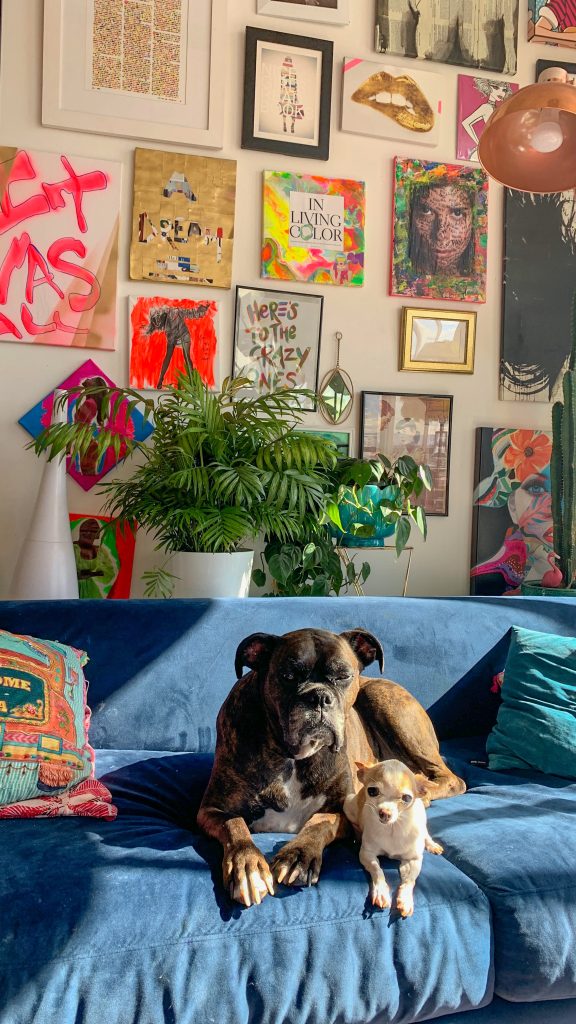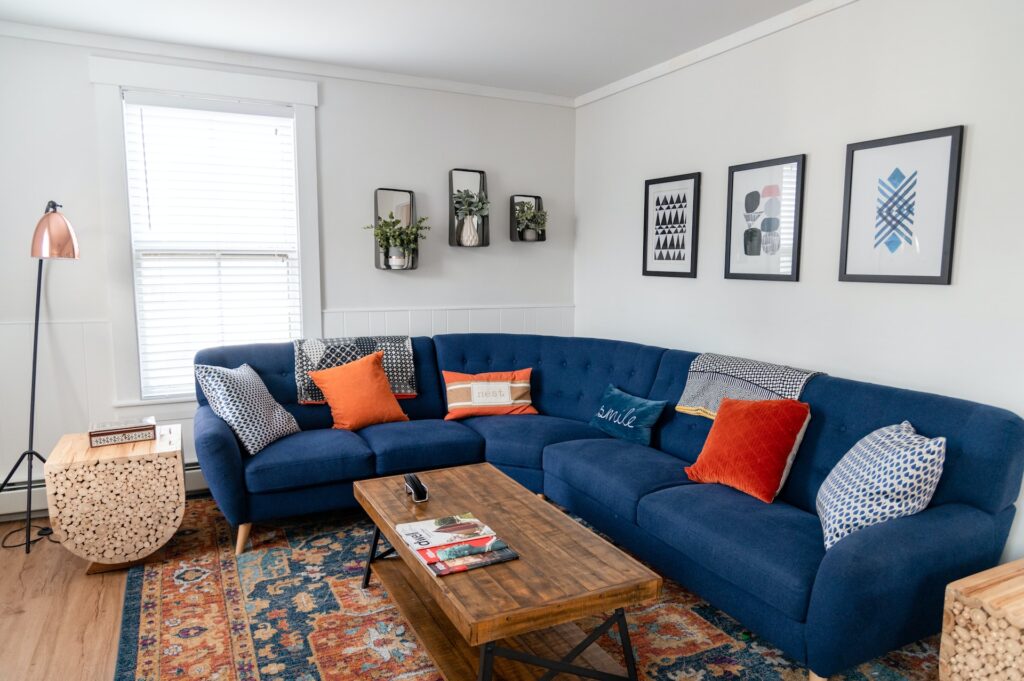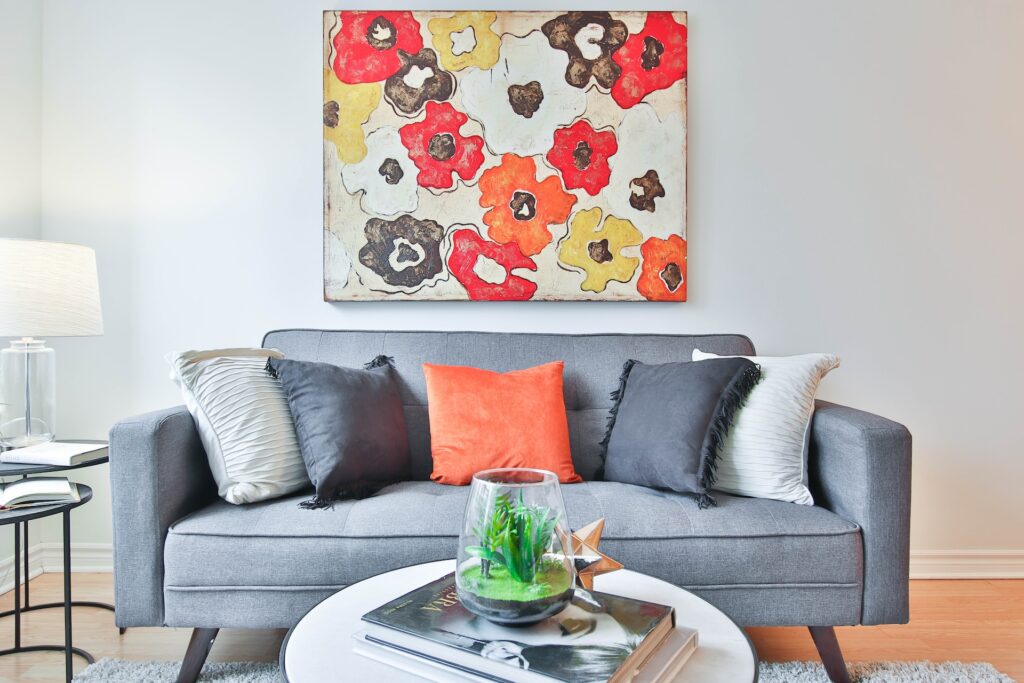Are you itching to revive the interior of your home and take it from drab to fab? Wouldn’t it be great if there was an easy way to infuse a spark of personality and style into every corner of your house without breaking the bank? If this sounds like something you would love, we have exciting news…
One of the best ways to inject liveliness into a room is by using colour strategically. Adding colour will bring fresh life into any space, and it can also be used to make unique design statements that represent who you are. In this blog post, we will explore how different hues can be used alongside one another in limitless ways while taking your interior design knowledge up a notch.
Why Colour is Important in Interior Design
Colour plays a crucial role in interior design, as it can evoke emotion, create atmospheres and bring personality into a space. Whether we realise it or not, our eyes see colour first before we take in shape, size or texture; colour catches our attention and is the quickest way to impact a space. By using the right colours in a room’s interior design, designers can enhance the moods of inhabitants and add functionality.

In any setting, be it residential or commercial spaces ranging from retail stores to hotels and corporate offices, different colours will generate feelings from happiness to peacefulness. Therefore, when planning an interior design project, understanding how colour influences people’s perception of the space is essential for creating a successful outcome.
How to Choose the Right Colours for Your Space
Choosing the right colours for your space can be overwhelming, but it doesn’t have to be! Knowing the basics of colour theory and taking the time to consider your options is key. Think about the purpose of the room and the atmosphere you want to create: brighter colours invigorate and energise a room, while softer tones offer a sense of relaxation.
Consider contrasts, as well; if one part of a room has vibrant colour, balancing that with some muted tones can help create a more interesting visual balance. Don’t forget to keep your style in mind–it’s important to find colours that reflect who you are and make you feel comfortable in your space. With just a few steps, choosing the best hues for your project can become a creative process that is both enjoyable and rewarding.
Understanding Colour Theory
Colours play an essential role in the design, expressing emotion, delivering messaging, and ultimately creating the visual aesthetic of a project. Understanding colour theory is paramount for designers to make thoughtful decisions regarding hue, saturation and value relationships. An understanding of how colours interact can influence the outcome of any piece, whether it’s creating harmony or stimulating contrasting emotions.
One doesn’t need to be a master painter to use colour effectively – even the most basic grasp on colour theory will allow designers to push boundaries and explore visually striking ideas. With some basic practice and exploration, anyone can learn to use colour strategically in their designs and help create powerful visual pieces.
The Psychology of Colour
Colour plays a much larger role in our lives than many of us realize – and it has a powerful psychological effect, too. Colour psychology studies how different colours and hues impact our emotions, behaviour, decisions, and more. Each colour can be interpreted in various ways and evoke various feelings, ranging from refreshing energy to calming serenity.

As such, when we choose colours to add to our environment, it is vital to understand their influence on our mindset because what brings one person peace may make another anxious. So whether you’re redecorating your home or building a website, keep colour psychology in mind – it’s an important part of adding personality and atmosphere to any space.
Monochromatic Colour Schemes
Monochromatic colour schemes have been popular amongst minimalist homes for many years. They act as an effective way to create a tranquil and timeless atmosphere in any space while still providing impactful visual interest. Monochromatic colour schemes can be created with any colour shade, such as pastel blues, soothing greens, or moody tones like dark greys and deep navies.
Homeowners can develop a unique, cohesive aesthetic by mixing and matching different textures and fabrics within these thoughtful hues. Reducing the need for unnecessary statement pieces and furniture pieces, monochromatic colour schemes focus on creating beautiful spaces which are still low maintenance and easy to update over time.
Analogous Colour Schemes
Analogous colour schemes create a calming, harmonious atmosphere in any space, whether in an apartment or a school. By using colours adjacent to one another on the colour wheel, such as blue-green and blue-violet, these schemes can bring together complementary hues and create a balanced yet interesting look. Such palettes can create an inviting atmosphere; they are often seen in nurseries and classrooms to encourage creative play and learning.
For adults, analogous colours are frequently used in offices and reception areas to promote concentration and relaxation. The right combination of hues creates a sense of unity that astounds those who take advantage of this powerful design element.
Complementary Colour Schemes
Complementary colour schemes can create aesthetically pleasing visuals in any design. Picking two colours directly opposite each other on the colour wheel produces a vibrant contrast, attracting attention and drawing attention to a specific point.

When building an effective complementary palette for projects such as website design, it is essential to remember the fundamentals of contrast – working with the right intensity and proportions of darker and lighter shades generates a rich composition with details and vibrant hues. Each colour option brings out certain vibes or emotions, so careful selection is paramount to achieve unique and eye-catching contrasts.
Using Accent Colours
Incorporating an accent colour can be a great way to add vibrancy to any space, and it works especially well with tiles. The best part about using accent colours is that you don’t need to paint the whole room to make your décor pop – just a few choice pieces here and there suffice. These small changes can elevate your entire décor so that tiled walls become something more than functional.

They become statement pieces in the form of colourful mosaic designs, bright tiles in unexpected places, or simply sharing each tile’s personality with its unique pattern. As long as you keep things looking balanced and design-savvy, adding an accent colour with tiles adds style points while retaining functionality simultaneously.
Using Colour in Different Rooms
Whether it’s vibrant green for the bedroom, calming blue for the bathroom, or energizing yellow for the kitchen, using colour in different rooms can create an atmosphere to turn a house into a home. With careful consideration, you can choose from the many hues available and combine shades with setting different moods throughout the living space. Paying attention to colour psychology is important when making decisions since colours bring out certain emotions, which help create an ideal ambience for each room.
Furthermore, accents with colours like patterned rugs and wall art are great ways to add more depth and character to your place. Striking the right balance between colours is essential, as too much may create an upsetting space, while too little can make a room appear incomplete or uninviting.
Living Room Design
The living room is one of the essential spaces in your home, and its design should reflect your personality. Incorporating colour is a great way to achieve a bold and unique look for your living room. Whether you’re going for bright hues like turquoise or pink or prefer more muted tones such as creams and taupes, creating contrast with various shades will help bring the space to life. Try adding pops of colour through furniture, rugs, art and decorative accessories. Utilise different textures like velvet and linen to enhance the eye-catching effect further. With careful consideration, you can give your living room an appearance that stands out from the crowd.
Bedroom Design
Bedroom design is an art unto itself, and having the right colours in your bedroom is a key component to creating a bold and unique space. Having too much of one colour can be overwhelming, so combining different tones and shades is important for an exciting and well-balanced scheme.
Try combining bright sapphire blues, deep forest greens, copper highlights and sandy neutrals – these stand-out colours create a vibrant yet calming atmosphere and allow you to have fun adding creative accents such as metallic wallpaper or patterned cushions. Experiment with subtle lighting and layer different textures to provide visual interest, making it easy to add your flair that will help express your creativity through your bedroom design.
Kitchen Design
Colour is the key ingredient when creating a bold and unique kitchen design. A bright and vibrant kitchen backsplash is the perfect way to impact any space significantly. By selecting the right colour for your backsplash – such as pink, green, or blue – you can stunningly transform existing cabinets and create a whole new look for your kitchen. For example, a tiled green backsplash can easily contrast against the white cabinetry and be further complemented by modern wall art and other eye-catching decors. For those daring enough to go bold with colour, there’s no limit to what you can accomplish when designing your kitchen.
Bathroom Design
Creating a beautiful and unique bathroom can be as simple as incorporating bold and eye-catching colours. By selecting the right paint, wallpaper and tile shades, you can create an aesthetically pleasing atmosphere that genuinely reflects your style. For example, coordinate one bold colour with neutral tints to make a style statement that won’t overpower the room. Or choose a vivid contrasting colour palette to inject life into the design and completely change the space’s feel. Remember – when it comes to colour in bathroom design, go big or go home!
Conclusion
When it comes to creating a bold and unique living space, incorporating colour is essential. You can create an atmosphere that reflects your personality with careful consideration and an eye for detail. The possibilities are endless – so go ahead and dare to be bold with your design! From subtle shades to bright hues and everything in between, let your creativity and personal style shine through your living space. With a bit of experimentation, you can create a unique look guaranteed to make an impact.








